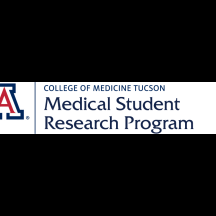Department Chair, Epidemiology and Biostatistics
Professor, Public Health
Professor, Arid Lands Resources Sciences
Professor, Entomology / Insect Science
Professor, Global Change
Professor, School of Animal and Comparative Biomedical Sciences
Professor, Arid Lands Resources Sciences
Professor, Entomology / Insect Science
Professor, Global Change
Professor, School of Animal and Comparative Biomedical Sciences
Professor, Geography
Education:
- University of Michigan, 2006 (Ph.D., Epidemiology)
- University of Michigan, 2001 (M.P.H., Epidemiology)
- Lawrence University, 1997 (B.A., Chemistry/ Biology)
Honors and Awards:
- Workshop Scholarship; Climate Change and Vector-borne Disease; National Center for Atmospheric Research, 2011
- Global Transformations Seminar Scholar, University of Michigan, 2001
- Klare Memorial Scholar, University of Michigan, 1999-2001
- Dean’s Award, University of Michigan, 1999-2001
- Trustee Fellowship, Lawrence University, 1993-1997
- Dow Chemical Fellowship, Lawrence University, 1993-1997
- Kansas Regent Scholar Awardee, 1993-1997
Major Areas of Research Interest:
Kacey C. Ernst, PhD MPH joined the faculty of the College of Public Health in 2008. She has begun developing projects related to the epidemiology of infectious diseases with partners at Arizona Department of Health Services as well as investigators in the Departments of Geography and Biology. She also plans to continue research on the ties between environment and vector-borne diseases.
Her doctoral dissertation research focused on malaria in the highlands of western Kenya. She resided in Kenya for over two years designing and administering a case-control study that examined environmental, behavioral and socio-economic determinants of malaria. Her work also included assessments of the spatial and spatio-temporal patterns of malaria cases.
Selected Publications:
Cohen JM, Ernst KC, Lindblade KA, Vulule JM, John CC, Wilson ML. (2008)Topography, land-cover, and elevation predict areas at risk for malaria within communities in a highland region of western Kenya. Mal Journal 17:40.
Menge DM, Ernst KC, Vulule JM, Zimmerman PA, Guo H, John CC. (2008) Microscopy underestimates the frequency of Plasmodium falciparuminfection in symptomatic individuals in a low transmission highland area. American Journal of Tropical Medicine and Hygiene 79 (2):173-7.
Cohen JM, Ernst KC, Lindblade KA, Vulule JM, John CC, Wilson ML Topography, land-cover, and elevation predict areas at risk for malaria within communities in a highland region of western Kenya. (Submitted November 2007).
Sponsored Research Through MSRP:
Emily Wilkinson, (MSRP 2011): "Molecular Biology of Vertically Transmitted T. Cuzi Infection in Argentina"
Monday, March 5, 2018

